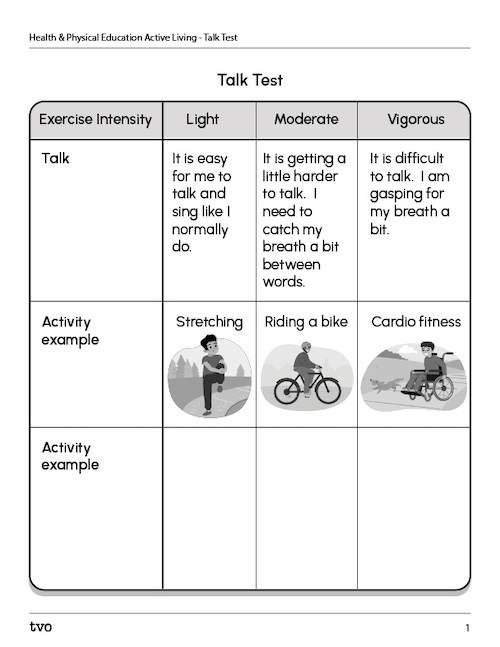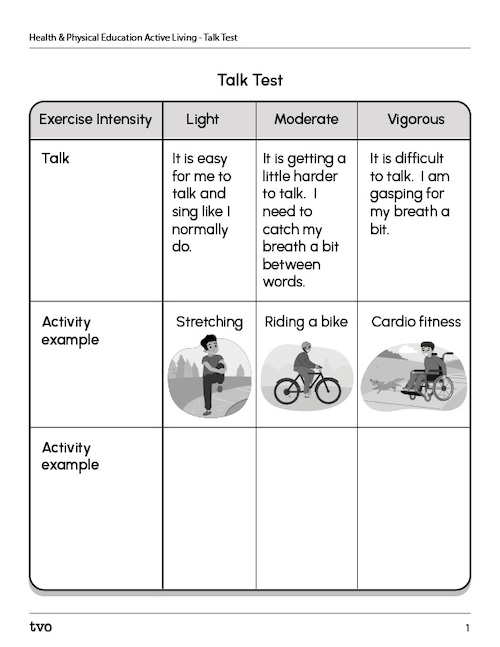Minds On
Don't let it drop
Try It
Try it
Let's play a game! Find a soft object in your learning space. Place that object on your chest.
- How can you move so that the object doesn't fall?
- What are different ways you can move?
- What body parts are you using?

Now, challenge yourself by not using your hands, by making different movements like the crab walk, or while demonstrating a balance.
- When the soft object does fall off, stop and think of how your body feels.
- What signs of physical exertion are you feeling?
Action
The signs of physical exertion
Brainstorm
Brainstorm
Use the following checklist to help guide your thinking and record your thoughts using a method of your choice.
Signs of physical exertion checklist
I am considering:
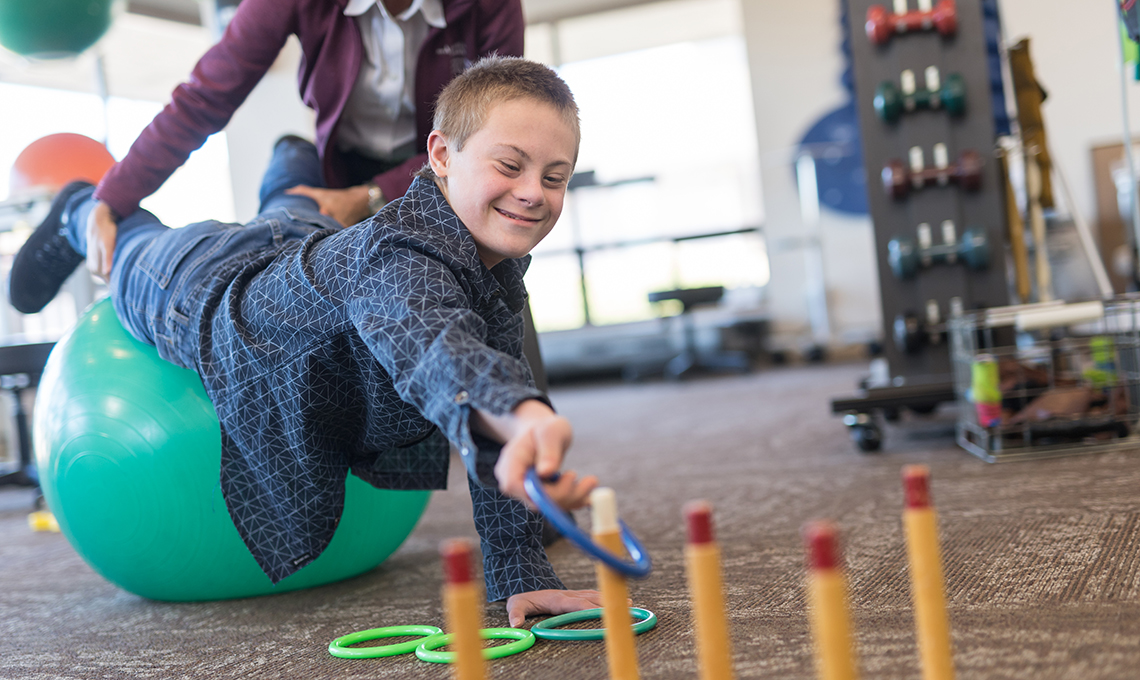
Press 'Signs' to access some signs of physical exertion.
Some signs of physical exertion are:
- Your heart rate is faster.
- You are breathing heavier.
- It is a little bit difficult to talk.
- You are a little sweaty and warm.
- You are thirsty.
Activity 1: Volcanoes and craters
Now, you will be doing a cardiovascular activity, which is an activity that causes the heart to beat faster.
Materials Needed
Materials needed
You will need:
- Mini cones or cups
- Balled up socks
Safety
Before you begin:
Scatter cups around the learning space. The cups are right side up and the goal is to flip as many upside-down. Use small objects such as balled up socks or small soft toys and do a cardio move of your choice before you flip the cup.
Press 'Cardio Move' to access a reminder of different cardio moves.
Examples of cardio moves are:
- Alternating kicks: kick in one direction and then kick your other leg.
- Arm circles: stretch arms straight away from body and move them in a circle motion frontwards or backwards.
- Twisting your body side to side: keep your feet still, move your body to face one side and then twist to face the other.
After you turn at least half of the cups, stop, and explore the self-assessment chart. This chart will help you measure your perceived rate of exertion. It is a scale that helps you self-assess your intensity level while being active.
Estimate using the examples in the chart to assess how hard your body is working to get blood to your other muscles.

A detailed chart, Rate of Perceived Exertion: Estimate your effort level by self-assessing how you feel. There are various learners doing different movements, followed by several statements. The first statement is: I am working super hard I need to stop and take a break. I am gasping for air. I can only keep this pace for a short period. The second statement is: I can still talk, but I don't really want to. I'm sweating so much! My heart is beating fast but I can keep going. The third statement is: I'm just above comfortable. I am sweating more and can still talk but I am slightly breathless. The fourth statement is I am comfortable and could maintain this pace all day long. I can feel my heart beating a little bit faster and I am breathing a bit harder. The last statement is: I am in my resting heart rate. I feel calm and relaxed.
Activity 2: Space workout
Check out this video entitled “Power Up: Outer Space” for a space workout. Follow up to the best of your ability.
Cool Down
Cool down
After this activity, drink some water, catch your breath and relax with some light stretching exercises. Reflect how you feel.
Then, complete the Talk Test in your notebook or using the following fillable and printable document. If you would like, you can use speech-to-text or audio recording tools to record your thoughts.
Talk Test is a test that helps you assess if your heart and your lungs are working hard during physical activity. If you are able to talk as you usually do then you are working at mild level. If you need to take a few breaths of air while talking, you are working at a moderate level. If you need to gasp for air and find it a little bit difficult to talk, you are working at a vigorous level.
Start playing again challenging yourself to give your best effort. Make sure you self-regulate, if you need to stop, take a break!
Consolidation
Show what you know
Which activities do you like to participate in that involve vigorous effort?
Access this video entitled “Basketball” to explore why Lachlan loves to play basketball.
Student Success
Think-Pair-Share
Why does Lachlan love to play basketball? If possible, share your answers with a partner.
Note to teachers: See your teacher guide for collaboration tools, ideas and suggestions.
Take the time to be active. Choose one cardio activity that you enjoy doing and self-assess and record your level of exertion using one of the methods you learned, such as the Talk Test or Perceived Rate of Exertion.
Record your ideas using any method of your choice or in the printable and fillable templates.
You can either complete the Talk Test in your notebook or using the following fillable and printable document. If you would like, you can use speech-to-text or audio recording tools to record your thoughts.
Or, you can complete Rate of Perceived Exertion in your notebook or using the following fillable and printable document. If you would like, you can use speech-to-text or audio recording tools to record your thoughts.
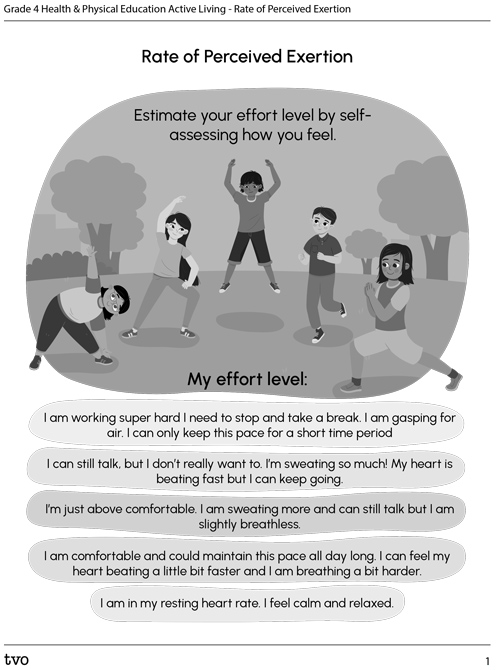
Press the Activity button to access the Rate of Perceived Exertion.
Activity (Open PDF in a new tab)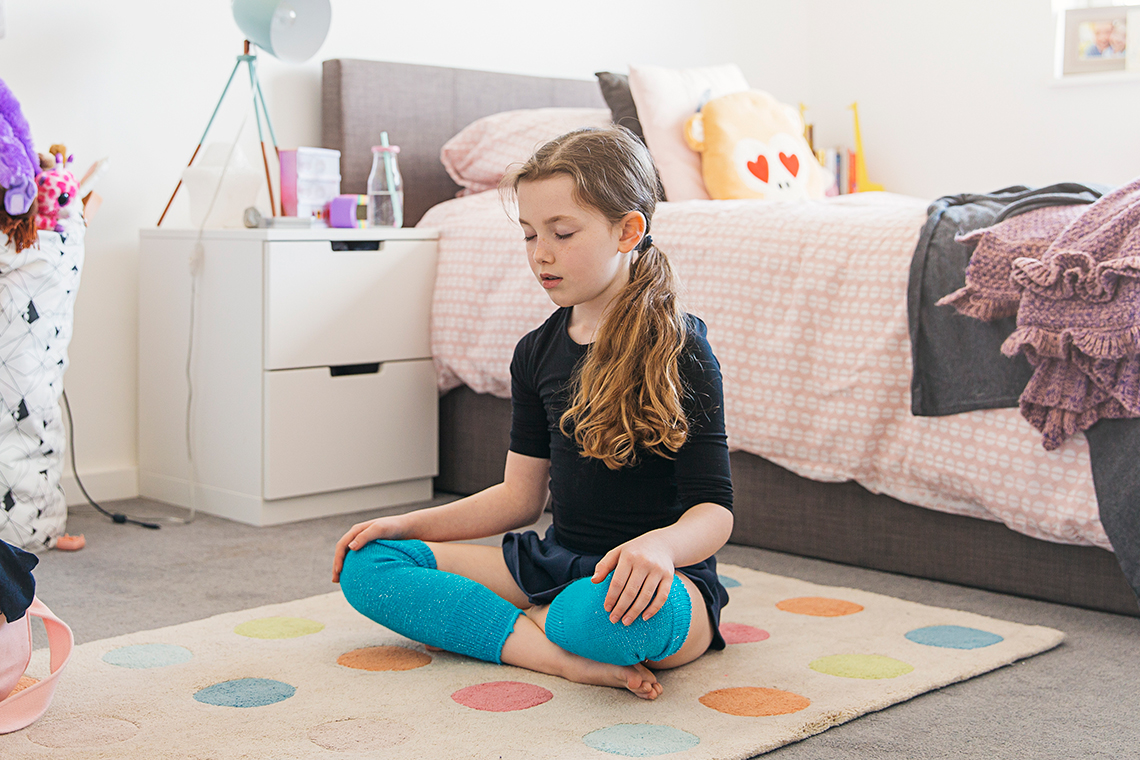
Pause and Reflect
Pause and reflect
Why is it important to assess your exertion level while performing a physical activity?
Reflection
As you read through these descriptions, which sentence best describes how you are feeling about your understanding of this learning activity? Press the button that is beside this sentence.
I feel…
Now, record your ideas using a voice recorder, speech-to-text, or writing tool.
